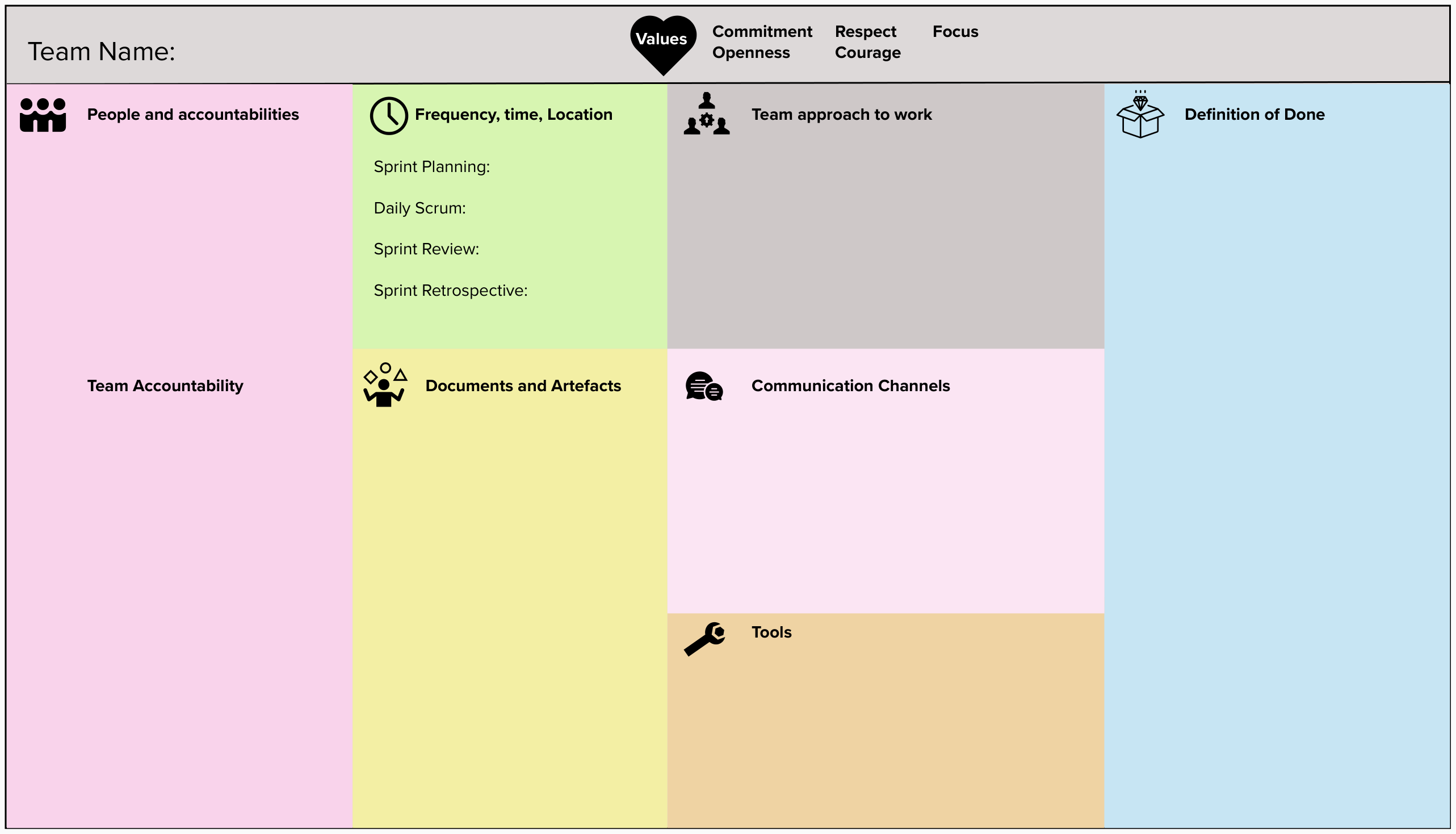
A team working agreement provides an agreed upon set of guidelines for a Scrum Team to follow, so everyone understands what is expected as they work together in pursuit of delivering value. A team can use a working agreement to help them work toward self-management.
A Scrum Team creates the team working agreement collaboratively. If you are a Scrum Master, you can support the creation and evolution of the team working agreement, but you should not decide what should be in it on behalf of the team. Of course, you can contribute to it as a peer.
When facilitating the creation of a working agreement with a Scrum Team you can guide them in the conversation by falling back and calling upon the Scrum values. The Scrum values of Courage, Commitment, Focus, Openness and Respect provide direction for a Scrum Team on their behavior and actions, and so any Scrum Team working agreement should consider them.
If needed, prompt the team with open-ended questions about what the Scrum values mean to them, helping them to develop and evolve the working agreement. For example, through conversation, they may find that Respect and Commitment manifest in the working agreement by everyone agreeing to attend the Scrum events on time. Or, Focus might mean an agreement that team members will not disturb other team members during certain times of the day.
There are many different ways to create a working team agreement. "Diverge and Converge" and "Worst Possible Idea" are two activities you can try with your team.
One way to facilitate the creation of the Scrum Team’s working agreement is by using a divergence and convergence which has two stages: the diverge stage, in which team members individually think of ideas, and a converge stage, where they discuss the ideas from the diverge phase together as a group to come to a shared understanding. This allows the team to generate a wide range of ideas and explore their different perspectives.
Another technique to use when creating a working agreement collaboratively is similar to Triz from Liberating Structures. This is another great way to facilitate the creation of a working agreement, especially with teams that struggle to come up with ideas and suggestions.
Using this structure, and asking 'what should we NOT do' helps people to think creatively and reflect on their way of working.
Whatever approach your team decides to use to create their working agreement, it is important that they do not forget their working agreement exists. The Scrum Team should live by the agreement they created collaboratively and revisit it and adapt it as needed.
For the team to appreciate and consent to the team working agreement as an evolving and living artifact, it needs to be transparent and accessible to the whole team. Visualize the working agreement, either physically or virtually. It might be useful to list items into different topics like in the example.

Example of working agreement template created in a virtual whiteboard
When new team members join a team, make sure they know the working agreement exists and invite them to discuss it with the team.
Resources:

Glaudia Califano
One of the things I struggled with at the start of my Scrum Master journey was building consensus in the team. Wanting to stay objective, give everyone space and time whilst still craving for a decision was a challenge for me. My own indecisiveness with regards to how to handle this ultimately did n.